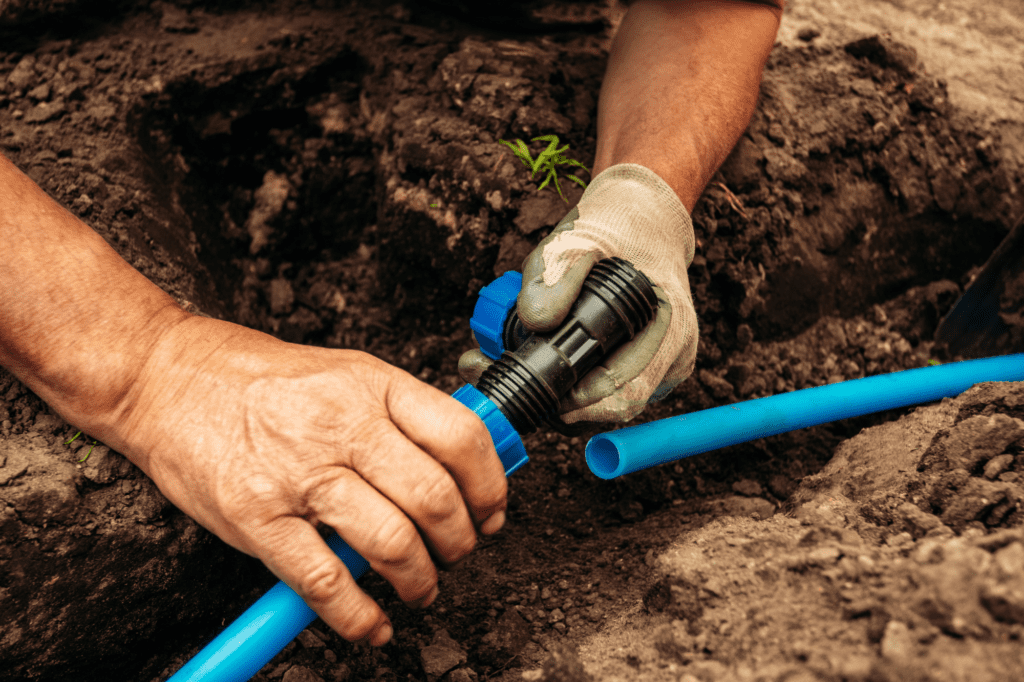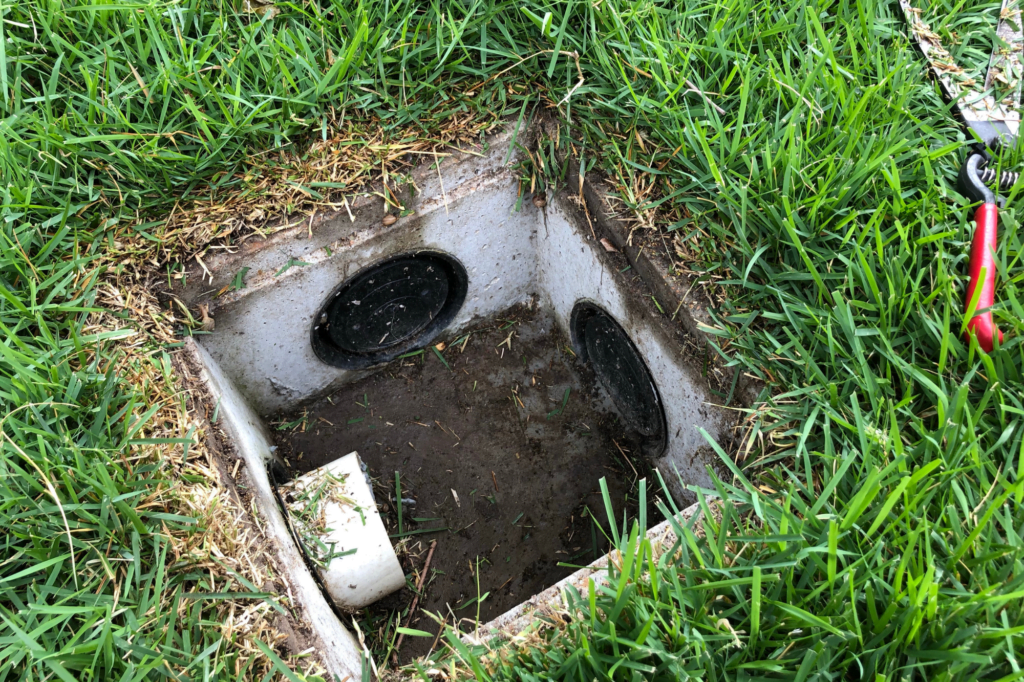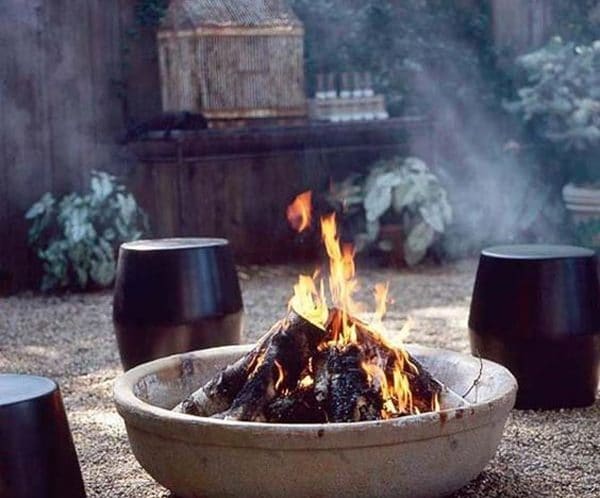Are you concerned about water runoff from your neighbor’s yard causing potential safety hazards on your property? Don’t worry, there are effective solutions to address this issue and ensure the safety of your surroundings.
In this article, we will guide you through practical steps to stop water runoff from your neighbor’s yard.
First, you need to assess the source of the water runoff and identify its main causes.
Then, it’s important to communicate with your neighbor and discuss the situation calmly and respectfully.
Installing a drainage system or creating a rain garden can help redirect the water flow and prevent further runoff.
Implementing erosion control measures and building retaining walls are also effective strategies.
Additionally, using permeable surfaces will aid in water absorption.
Lastly, if all else fails, seeking legal assistance may be necessary.
By following these steps, you can safeguard your property and create a safer environment for you and your loved ones.
Quick Summary
- Assess the source and causes of water runoff from the neighbor’s yard
- Communicate calmly and respectfully with the neighbor to address the issue
- Install drainage systems, such as French drains or swales, to redirect water flow
- Seek legal assistance if necessary to resolve conflicts and protect property rights
Assess the Source of the Water Runoff
Take a stroll through your yard after a heavy rain and you’ll likely notice streams of water flowing down from your neighbor’s property. It’s important to assess the source of the water runoff to effectively address the issue.
Start by evaluating your landscaping options. Look for areas where the water is pooling or flowing excessively. Consider installing a French drain or a rain garden to redirect the water away from your property. These solutions can help prevent soil erosion and water damage.
Additionally, you may want to consider hiring a professional to assess the situation and provide expert advice. They can help you determine the best course of action based on your specific yard and the severity of the water runoff. A professional may suggest installing a retaining wall or a swale to redirect the water and prevent it from entering your yard.
By taking these steps, you can effectively stop water runoff from your neighbor’s yard and protect your property from potential damage. Remember, safety should always be a top priority when dealing with water runoff, so don’t hesitate to seek professional help if needed.
Communicate with Your Neighbor
By engaging in open and constructive communication, you can effectively address the issue of excessive water flow originating from your neighbor’s property. Open dialogue is key in resolving any problem, including water runoff. Start by approaching your neighbor in a friendly and non-confrontational manner, expressing your concerns about the water runoff and its potential hazards. It’s important to establish boundaries and make your neighbor aware of the impact their water runoff is having on your property’s safety.
To help you effectively communicate your concerns, consider using the following table as a visual representation of your ideas:
| Point | Explanation |
|---|---|
| 1 | Express your concern about the excessive water flow and its potential hazards. |
| 2 | Share any damage that has already occurred on your property due to the water runoff. |
| 3 | Explain the importance of managing water runoff to prevent erosion and maintain safety. |
| 4 | Offer potential solutions, such as installing rain gardens or redirecting the water flow. |
| 5 | Seek their cooperation and willingness to work together to find a solution that benefits both parties. |
Remember, maintaining a calm and respectful tone throughout the conversation will help foster a positive outcome. Good communication can go a long way in resolving the issue of water runoff and ensuring the safety of both your properties.
Install a Drainage System
If you want to effectively address water runoff from your neighbor’s yard, there are three key points to consider: the French Drain, Swales, and Dry Well.
A French Drain is a trench filled with gravel and a perforated pipe that redirects water away from your property.
Swales are shallow ditches designed to slow down and channel water runoff.
Lastly, a Dry Well is an underground chamber that collects and slowly releases excess water.
By understanding these options, you can choose the best drainage system for your needs.
French Drain
With a French drain, you’ll be able to keep that water from your neighbor’s yard away from your property, preventing any further damage and giving you peace of mind. This drainage system is a popular choice for homeowners who desire safety and want to maintain their property properly.
By installing a French drain, you can effectively redirect water away from your yard, ensuring that it doesn’t cause any flooding or erosion. To enhance the effectiveness of your French drain, it is important to practice proper maintenance and consider natural landscaping options. This will help to prevent clogs and ensure that the drain continues to function optimally. Here is a table to help you understand the advantages of a French drain:
| Advantages of a French Drain |
|---|
| Prevents flooding |
| Reduces soil erosion |
| Protects your property |
| Easy to maintain |
By implementing a French drain and maintaining it regularly, you can safeguard your property and create a safer environment for you and your loved ones.
Swales
Create a natural and beautiful solution for redirecting excess water on your property with swales.
Swales are shallow channels that are designed to slow down and capture rainwater runoff. They’re an effective way to prevent water runoff from your neighbor’s yard from causing damage to your property.
By strategically placing swales on your property, you can create a green infrastructure that not only redirects water but also allows it to be collected and used for rainwater harvesting. This not only helps prevent erosion and flooding but also promotes sustainability by reducing the need for additional water sources.
Swales can be lined with plants and vegetation, adding beauty to your landscape while also serving a practical purpose.
So, if you’re looking for an eco-friendly solution to stop water runoff, consider incorporating swales into your property’s design.
Dry Well
The dry well is an underground storage system that effectively collects and absorbs excess rainwater, providing a sustainable solution to manage water drainage on your property. By installing a dry well, you can prevent water runoff from your neighbor’s yard from causing damage or flooding. Not only does it help protect your property, but it also benefits the environment by reducing the strain on stormwater systems.
Here is a visual representation of the benefits of a dry well:
| Benefits of Dry Well | Installation Process |
|---|---|
| Prevents damage and flooding | Dig a hole for the dry well |
| Reduces strain on stormwater systems | Line the hole with landscape fabric |
| Promotes sustainability | Fill the hole with gravel and perforated pipe |
| Helps protect your property | Cover with more gravel and topsoil |
| Environmentally friendly | Ensure proper drainage |
Installing a dry well involves digging a hole, lining it with landscape fabric, filling it with gravel and a perforated pipe, and covering it with more gravel and topsoil to ensure proper drainage. By following the installation process, you can effectively manage water runoff and keep your property safe.
Create a Rain Garden
Transform your yard into a beautiful oasis by implementing a rain garden to prevent water runoff from your neighbor’s yard. A rain garden is a shallow depression that collects and filters rainwater, allowing it to slowly infiltrate into the ground.
Here are some tips to help you create and maintain a successful rain garden:
- Plant selection: Choose native plants that are well-suited for your region’s climate and soil conditions. These plants have deep roots that can absorb large amounts of water, reducing runoff.
- Size and location: Determine the size and location of your rain garden based on the amount of runoff you need to manage. Ideally, it should be placed in a low-lying area where water naturally accumulates.
- Soil preparation: Ensure that the soil in your rain garden is well-draining by amending it with compost or sand. This will help water infiltrate more easily.
- Mulching: Apply a layer of organic mulch around your plants to help retain moisture, suppress weeds, and prevent erosion.
- Maintenance tips: Regularly remove debris, such as leaves and twigs, from your rain garden to prevent clogging. Also, check for any signs of erosion and replant as needed.
By following these tips, you can create a beautiful and functional rain garden that effectively manages water runoff from your neighbor’s yard while adding aesthetic appeal to your own.
Implement Erosion Control Measures
Now that you’ve learned about creating a rain garden to help manage water runoff from your neighbor’s yard, let’s delve into implementing erosion control measures to further address this issue. Erosion prevention techniques are essential for maintaining a safe and secure environment around your property.
One effective way to control erosion is by strategically planning and implementing landscaping solutions. Consider planting grass or groundcover plants on the slopes of your yard, as their root systems can help stabilize the soil and prevent erosion. Additionally, using mulch or straw on bare areas can provide an extra layer of protection against runoff.
Another option is to build retaining walls or terraces, which can help slow down the flow of water and prevent it from causing erosion. These structures can be constructed using various materials such as stones, bricks, or timber, depending on your preference and budget.
It’s also crucial to regularly inspect and maintain your gutters, downspouts, and drainage systems. Keep them clear of debris to ensure proper water flow and prevent overflow, which can lead to erosion.
By implementing these erosion control measures and incorporating landscaping solutions, you can effectively manage water runoff from your neighbor’s yard and create a safer environment for your property.
Build Retaining Walls
To effectively manage water flow and prevent soil erosion, you can create a visually appealing landscape by building retaining walls on the slopes of your property. Retaining walls are an excellent solution to stop water runoff from your neighbor’s yard and protect your land from erosion.
When designing your retaining wall, it’s crucial to consider factors such as the slope gradient, soil type, and water flow patterns in your area. These factors will help you determine the appropriate height and length of the wall.
When it comes to construction materials, there are several options to choose from. Concrete blocks and interlocking concrete blocks are popular choices due to their durability and strength. They provide a sturdy structure that can withstand the pressure of the soil and water. Another option is timber, which can give your landscape a more natural look. However, it’s essential to choose a rot-resistant wood like cedar or redwood to ensure the longevity of your retaining wall.
When building your retaining wall, it’s important to follow proper construction techniques and safety guidelines. Make sure to dig a trench for the foundation, use proper drainage systems, and backfill the wall with suitable materials. Additionally, consider consulting with a professional for assistance with the design and construction process.
By building retaining walls, you can effectively manage water flow, prevent soil erosion, and create a beautiful landscape that enhances the safety of your property. Choose the appropriate design and construction materials to ensure the longevity and stability of your retaining wall.
Use Permeable Surfaces
Consider using permeable surfaces in your landscape to effectively manage water flow and prevent erosion on slopes of your property. By implementing permeable pavers, you can create a surface that allows water to seep through, reducing runoff and minimizing the risk of flooding. This eco-friendly solution not only helps control water flow but also promotes rainwater harvesting, making it a sustainable choice for your yard.
Here are five reasons why you should consider using permeable surfaces:
- Prevents water runoff: Permeable pavers allow water to infiltrate the soil, preventing excessive runoff that can damage your property and neighboring yards.
- Reduces erosion: By slowing down water flow, permeable surfaces help prevent soil erosion, keeping your yard and slopes intact.
- Minimizes flooding: The ability of permeable pavers to absorb water helps reduce the risk of flooding during heavy rainfall, keeping your property safe.
- Promotes groundwater recharge: Instead of water being wasted through runoff, it can be absorbed into the ground, replenishing the groundwater supply in your area.
- Environmentally friendly: Choosing permeable surfaces is an eco-conscious decision that helps protect the environment by reducing stormwater runoff and promoting sustainable water management practices.
Incorporating permeable surfaces in your landscape not only helps manage water flow effectively but also contributes to a safer and more sustainable environment. Consider using permeable pavers and embrace the benefits they offer for your yard and surrounding areas.
Seek Legal Assistance if Necessary
Seeking legal assistance may be advisable if you encounter any issues related to the implementation of permeable surfaces in your landscape. It is important to know your rights and protect yourself from any potential conflicts that may arise.
Hiring a lawyer who specializes in property law can help ensure that you are well-informed and legally protected throughout the process.
When dealing with water runoff from your neighbor’s yard, it is crucial to understand the legal aspects involved. Your lawyer can guide you through the local laws and regulations regarding water drainage and property rights. They can help you assess the situation and determine the best course of action to resolve the issue.
In some cases, legal action may be necessary to address the problem effectively. Your lawyer can assist you in filing any necessary claims or lawsuits against your neighbor, if warranted. They can also negotiate with your neighbor or their legal representation to reach a mutually agreeable solution.
Remember, hiring a lawyer will provide you with the expertise and guidance needed to navigate the legal complexities of water runoff issues. They can help protect your rights and ensure that your neighbor is held accountable for any damage caused by their runoff.
Don’t hesitate to seek legal assistance if you encounter any challenges related to water runoff from your neighbor’s yard.
Frequently Asked Questions
How can I determine if the water runoff from my neighbor’s yard is causing damage to my property?
To determine if your neighbor’s yard is causing damage to your property, you should inspect for signs of erosion, foundation issues, or water damage. Consult a professional for a property damage assessment and determine liability accordingly.
What steps should I take to effectively communicate with my neighbor about the water runoff issue?
Approach your neighbor tactfully to discuss the water runoff issue. Use effective communication strategies to express your concerns about potential damage to your property. Prioritize safety and work together to find a solution.
Are there any alternative methods to installing a drainage system to prevent water runoff from my neighbor’s yard?
To prevent water runoff from your neighbor’s yard without installing a drainage system, consider alternative solutions like natural landscaping. These methods can help control water flow and prevent potential safety hazards on your property.
How can I create a rain garden that effectively absorbs water runoff from my neighbor’s yard?
To effectively absorb water runoff from your neighbor’s yard, create a rain garden. This environmentally-friendly solution not only prevents flooding but also provides benefits like improving water quality and attracting beneficial wildlife. Here’s how to design one.
What are some common erosion control measures that can be implemented to address water runoff from my neighbor’s yard?
To prevent water runoff from your neighbor’s yard and control erosion, implement effective erosion control methods. Install terracing, retaining walls, or vegetation barriers to slow down and absorb water, ensuring safety for your property.
Conclusion
To conclude, stopping water runoff from your neighbor’s yard requires assessing the source, communicating effectively, and implementing various solutions.
Installing a drainage system, creating a rain garden, and using erosion control measures can effectively manage the runoff.
Building retaining walls and using permeable surfaces are additional options to consider.
Remember, if necessary, seek legal assistance to address the issue.
By taking proactive steps, you can prevent water runoff and maintain a harmonious relationship with your neighbor.











